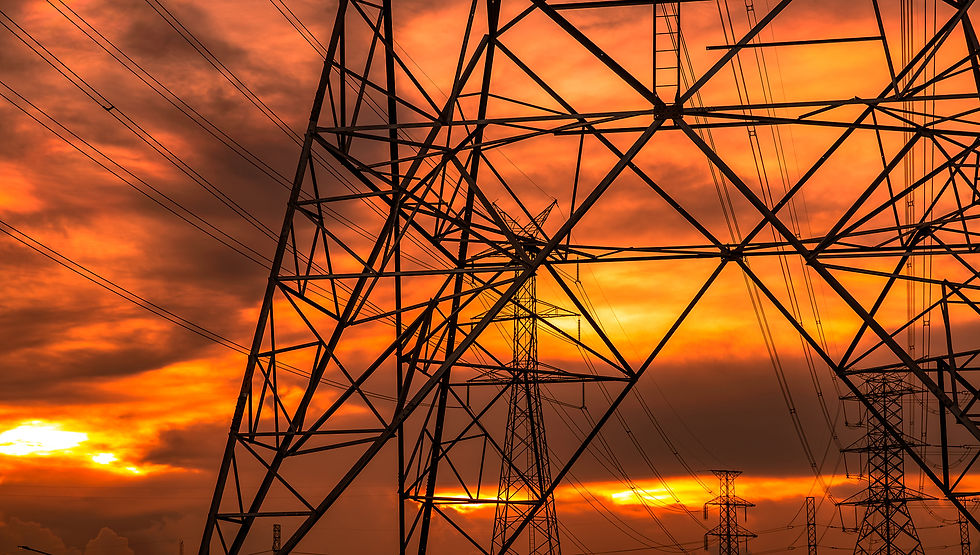Snowy 2.0 will reduce greenhouse gas emissions in Australia: truth or lie?
- vepcentre
- Dec 10, 2019
- 4 min read
Updated: Dec 11, 2019

By Bruce Mountain, VEPC Director
Snowy Hydro has claimed that its massive “Snowy 2.0” pumped hydro scheme will reduce emissions by storing renewable electricity. Truth or lie? In short, lie. But the issue is complex.
The notion that many people have in their minds – and that Snowy Hydro has promoted – is that Snowy 2.0 will pump electricity when there is lots of renewable production (when market prices are likely to be lower) and will then generate using that stored water when prices are high (when renewable production is not plentiful). The inference is that Snowy 2.0 stores renewable electricity.
This is a false inference. On a shared power grid, where there are many different producers and consumers in the market at the same time, it is impossible to objectively match individual consumers with individual producers.
Some customers might wish to claim that their electricity is being sourced from a particular power station – “I am buying wind or solar power” - but this is impossible to prove. Unless the renewable generator is behind your electrical meter (and not connected to the grid), you can not say for sure which generator is supplying your electricity.
So this must mean, that we can not identify which generator is being used to pump electricity when Snowy 2.0 is pumping? Well, no actually, we can know for every trading interval which generator was setting the price. In other words, which was the marginal generator. The Australian Energy Market Operator keeps a record of this. We can know with reasonable certainty, leaving all other things the same, which specific generator(s) would not be producing electricity if Snowy 2.0 was not using that electricity to pump water. These generators are the “marginal”, price-setting, generators. It is the emissions from these generators that would be avoided if Snowy 2.0 was not pumping.
The same logic applies to any other demand on the grid, it is not unique to Snowy 2.0 or storage more generally. (To be precise there can from time to time be technical limitations associated with the minimum stable generation of thermal plant which mean that the system operator constrains down cheaper renewable production even if this more expensive.)
So, which generators are typically likely to be marginal? They will be the most expensive generators that are likely to be dispatched on the power system at the low priced times that Snowy 2.0 is most likely to be pumping. For the next two decades, we can be confident that they will not be variable renewable generators, i.e. generators that use (variable) renewable resources and that have zero avoidable costs. Instead the marginal generators at the time that Snowy 2.0 is pumping will be those fossil fuel generators that have relatively low avoidable cost and so are most likely to be setting prices when market prices are low. In fact, to be specific, at these times it will most likely be brown coal generators that are at the margin – they have by far the lowest avoidable costs (and the highest emissions) of all the fossil fuel generators. So, for the next two decades during which we are still likely to have a large stock of coal generators, it will be coal generation and specifically brown coal generation that Snowy 2.0 stores.
In fact a well operated storage business that buys low and sells high could not be making matters worse, from a greenhouse gas perspective, since they will buying electricity when the cheapest (and most emission intensive) fossil fuel generator is at the margin and will be selling it when prices are the highest (when the least emission intensive generator is likely to be at the margin).
Ah, but I imagine you protest, surely the average emission intensity will be low when Snowy 2.0 pumps since this will be at the times that there will most likely be plentiful renewable electricity. Yes, the average emission intensity is likely to be lower at these times. But that misses the point. Leaving all other factors unchanged, it is the marginal change in emissions that determines the emissions when Snowy 2.0 pumps. The question to ask yourself is this: which generator would be turned down if Snowy 2.0 did not buy electricity to pump water uphill?
But surely this argument then applies to all storage, including batteries? Sadly the answer is generally yes. But there is a big “but”: if a renewable generator is constrained from producing (because of transmission constraints) and at those times is able to store the renewable production that would otherwise be spilled then such storage will in fact increase the supply of renewables when that stored electricity is later used or fed back in to the grid (assuming the grid is able to ship it to other users).
As this blog sets out, storage can help or hinder emission reductions depending on whether it is able to store electricity from renewable resources that would otherwise spill their production. This is not the case for Snowy 2.0 at the very least for the next two decades. Snowy Hydro’s claim that Snowy 2.0 will store variable renewable electricity does not hold water.
The Australian Energy Market Operator’s latest Quarterly Energy Dynamics report shows that for the third quarter of 2019, 4.5% of variable renewable energy was spilled. Suitably located storage – whether pumped hydro or battery or whatever else that stores renewable generation that would otherwise be spilled – will increase renewable production and consumption and in this way storage can reduce emissions.
The role of storage in increasing or decreasing greenhouse gas emissions has not yet received the attention it deserves in Australia although there is now a substantial body of research on this in other countries. Producers, consumers, storage service providers and policy makers need to start to take this into account.




Comments